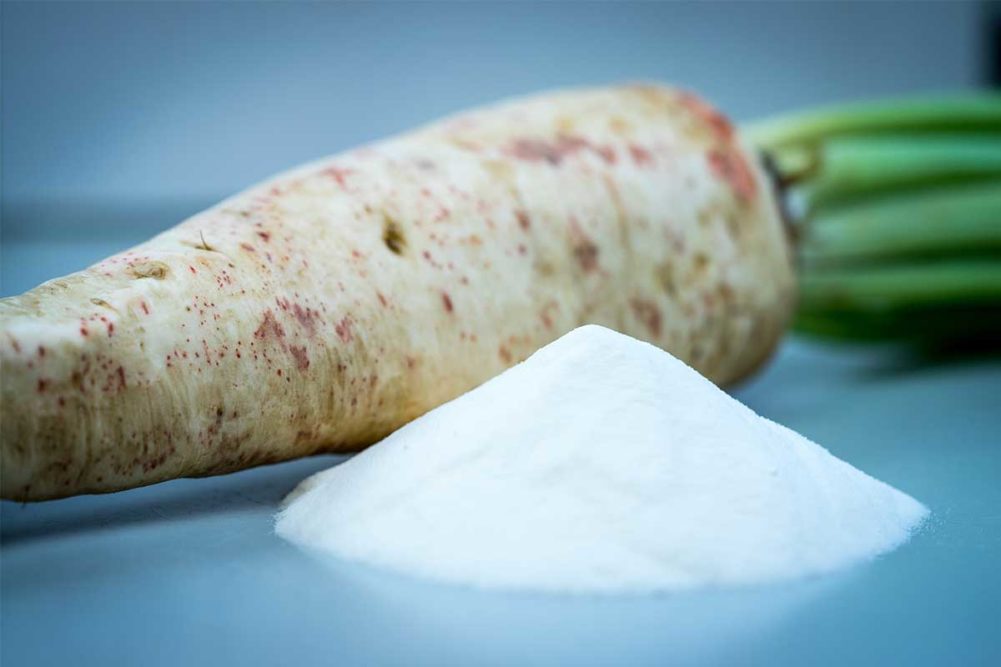While fiber’s ability to eliminate carbs and sugar has gotten plenty of attention during the current keto craze, it can provide plenty of other benefits to a baked food as well. Dietary fiber is also effective for promoting digestive health, for example.
“Consumers are increasingly aware of the role their gut microbiome plays in their overall health and wellness, with 58% of global consumers perceiving a connection between the function of the bacteria in the gut to wider aspects of well-being,” noted Deanne Dick, director of fiber for ADM. “However, many people associate added fiber with digestive distress, with research showing that nearly 70% of consumers would not purchase a product again if it caused gastrointestinal discomfort.”
Many fiber options today can ease these consumer concerns. ADM’s Fibersol, a soluble dietary fiber that can reduce the risk of bloating or other digestive issues associated with fiber, is classified as low in FODMAP, which is a chain of carbohydrates that may cause digestive distress. Fibersol has also been shown to minimize blood sugar spikes after a meal in healthy individuals and delay hunger by stimulating appetite-regulating hormones, Ms. Dick said.
Chicory root fibers like inulin and oligofructose have also been proven to support healthy microbiota, strengthen gut barrier function, improve bowel function and more.
“With global consumer interest in prebiotics increasing from 51% in 2018 to 61% in 2022, bakery producers need to create appealing products with the right on-pack messages,” said Denisse Colindres, nutrition manager, North America, Beneo. “In addition, by replacing sugar, chicory root fibers can help to achieve a reduced rise in blood glucose levels after the consumption of food.”
Soluble corn fiber also offers exceptional digestive tolerance and is non-GMO, appealing to health-conscious buyers with its clean label attributes.
“Not so long ago, bakers were more likely to use polydextrose,” noted McKenna Mills, senior technical services specialist, Cargill. “Today, however, soluble corn fiber is becoming a go-to choice thanks to its easy-to-understand nomenclature. Our IngredienTrack research consistently finds consumers view ingredients with recognizable designations, like soluble corn fiber, more favorably.”
Soluble corn fiber also has triple the digestive tolerance of chicory root fiber, useful in high-fiber applications.
“Formulating too much [soluble corn] fiber is less risky compared with some other fibers that may cause digestive distress at lower levels,” said Julia DesRochers, PhD, bakery technical services at Tate & Lyle.
Citrus fiber is another emerging ingredient with clean label appeal. The dietary fiber had one of the highest penetration rates in new product launches from 2017 to 2021, growing at a CAGR of 15.3% worldwide, said Diana Nieto, clean and simple platform lead, US and Canada, Ingredion. This year the company launched Fibertex citrus fibers, which contain greater than 90% fiber content.
“Citrus fiber is a product from a natural source and enables the industry to develop a product with a consumer-preferred label,” she said. “Fibertex supports texture improvement and fat replacement in baked goods and used in combination with other fibers like resistant starches, can help you reach the dietary fiber content needed for a fiber claim.”
In addition to its digestive benefits and clean label appeal, by replacing sugar and carbs, fiber can significantly reduce total calories, another popular demand from consumers.
“As baked goods tend to obtain quite a bit of their total calories from added sugars, reduced sugar options may entice shoppers who scan for more functional and purposeful indulgence in the baked goods and snack aisle,” Ms. Dick explained. “In fact, sugar reduction becomes 62% more important for shoppers seeking low-calorie options.”
This article is an excerpt from the December 2022 issue of Baking & Snack. To read the entire feature on Fiber, click here.





